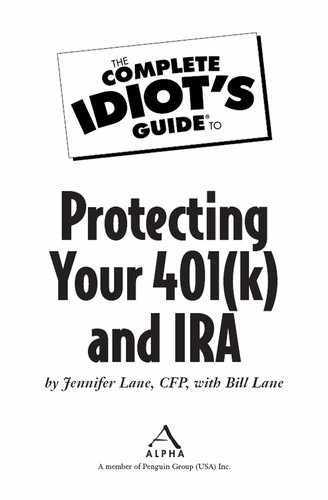Naming Your Beneficiaries
Beneficiary designations are easy to make and easy to change. But don’t let the simplicity fool you; pay careful attention to how you list the beneficiaries on your retirement accounts and review them each year when you go through the rest of your financial plan and investments.
You can make two types of beneficiary designations: primary and contingent. The contingent beneficiary only receives the account if the primary beneficiary dies before you do. Probably the most common beneficiary designations you’ll see with couples is where the partner or spouse is named as the primary beneficiary and the kids or other family members are listed as equal contingent beneficiaries.

Nest Eggs
Always list both a primary and a contingent beneficiary unless you’re naming something immortal—such as a trust or a charity—as a primary beneficiary. If you have no living beneficiaries, the proceeds of the retirement account go to your estate, where they must be liquidated and taxed.
You can designate multiple beneficiaries if you want—such as two of your siblings as equal primary beneficiaries and then a charity as a contingent beneficiary. In this case, both of your siblings would share the proceeds or, if one has died, the survivor would receive the whole share. If both your siblings were to die before you, the designated charity would receive the account.
If you have grandchildren, you may want the grandkids to inherit their parent’s share of your IRA instead of the parent’s other siblings, in the event the parent dies before you. In this case, list the parent as the beneficiary per stirpes. Per stirpes means that if the parent dies before you, their share goes to the deceased’s siblings rather than being shared by your surviving children, who might have been designated as co-beneficiaries.
For example, if you named your three kids as equal beneficiaries per stirpes, and one of them dies before you, then their kids would be entitled to the deceased parent’s share of the account. Without the per stirpes designation, your surviving two children would split the account and the grandchildren from the deceased sibling would get nothing. Most beneficiary forms give you the chance to check a box if you want to add the per stirpes designation.

Rainy Days
Don’t list a person as a beneficiary if he can’t use the money. This may sound counterintuitive, but inherited money in an IRA could reduce the benefits or access to services for someone on disability, for example. Listing a trust to benefit that person could be a better solution, but coordinate with the individual’s legal advisors to be sure.
When you update your estate plan, your lawyer will make sure you have the right beneficiary designations and that all are worded correctly. The trustee of the account, the mutual fund company or brokerage firm that manages it, for example, will provide a form for you to list the name, date of birth, and Social Security number of each beneficiary. If you’re naming a trust, you include the name of the trust, the date you are creating it, and its tax identification number.
If your instructions are longer than will fit on the form, most IRA accounts will let you file detailed beneficiary instructions in letter form. Work plans like 401(k)s and 403(b)s often don’t have this flexibility, but always ask. They might not make it obvious when completing their form, but when asked, many can be quite accommodating—especially because they want to keep your account with them when you leave that employer.
Keep a copy of the beneficiary designation form or other paperwork that you used to name your beneficiaries. The trustee should send you written confirmation that any changes you make have been implemented. Many brokerage firms and mutual funds show your beneficiary designations online. In this case, keep a screen shot or printout with your other account statements.
..................Content has been hidden....................
You can't read the all page of ebook, please click here login for view all page.
